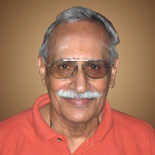|
Go to Part 56 II – We cannot bypass the prescribed qualifications Unfortunately, many of us remain a saàsäri-jéva even after listening to the çästra for a considerable length of time from a competent guru. Kaöha Upaniñad says: “In spite of listening, many people do not understand” [344]. In the Upaniñads themselves, only a few like the ideal disciple Naciketas [345] gain the knowledge immediately. In the case of Çvetaketu, who had spent twelve years in the gurukula, his father had to explain it nine times through different examples [346]. As regards Indra who was taught by Prajäpati, he first misunderstood ätmä to be the body in the waking state, later as body in the dream state, then again as the body in the deep sleep state and only later as consciousness. A demon king, Virocana, who had also learnt from Prajäpati understood that the body in waking state is ätmä and never realized that his understanding was wrong [347].
The reason is that self-knowledge can be grasped only by those who possess the qualifications prescribed by the çästra. Çästra has prescribed the qualifications so that the severity of our mental orientation based on self-ignorance may be neutralized. While listening to the teaching, only on being qualified, it would be possible for us to relieve the I-sense of functioning in the dual state as the knower seeking knowledge from the guru. While teaching, the guru is himself the pramäëa and is in an impersonal state. We should also be in a similar state as the receiver of the pramäëa [348]. Otherwise, what is revealed would not be clear to us, as our mental condition would be opposed to the knowledge. So, we have no option at all except to become at least reasonably well qualified to receive the knowledge.
III - Çravaëam, mananam and nididhyäsanam
The second part of the discipline prescribed by the çruti (i) for receiving the knowledge; (ii) for gaining certainty of the knowledge; and (iii) for freeing it from obstructions is [349]. “The self, my dear, is worthy to be seen (known) [350], and is to be heard of (from a guru) (çravaëam), analyzed (mananam) and contemplated upon (nididhyäsanam)”. As no commandment is feasible in respect of knowing, the prescription for knowing is taken as a likeness of injunction. The injunction about çravaëam, mananam and nididhyäsanam is categorized as a niyama-vidhi, or that which has to be compulsorily followed.
Çravaëam is consistent and systematic study of Vedänta for a length of time from a live guru who has learnt it according to the sampradäya. Under the guidance of the guru, we inquire [351] into and analyze the meaning of the statements of the text and arrive at a distinct and exact understanding of what they say. We learn to correctly interpret the apparently contradicting statements and understand the purport of the çästra properly. We arrive at the exact revelation under the guidance of the guru, after clearing the doubts that arise in this regard. Through çravaëam we accomplish
Invariably, during çravaëam, our intellect with its own presumptions and inferences challenges the knowledge, just as in the case of any other knowledge that is gathered. In the case of this knowledge of non-duality, our doubt is deep rooted, since our perception establishes only duality. We have also great reluctance in accepting that we are essentially the same as Éçvara. We have the serious doubt, “Are we really what the çruti says?”
As for solving this problem, perceptual knowledge, which is based on the duality of the subject and the object, cannot reveal the non-duality of the self. Therefore, it is now the job of the very same reasoning intellect to realize through logic [352] that neither can non-duality be disproved nor can duality be established. Fortunately for us, Gaudapädäcärya has logically proved in the karkikäs (commentary in verse) written on Mäëòükya Upaniñad that Vedänta is beyond argument and contradiction.
Doubts also arise from the contentions of various schools of thought and the teaching of charismatic personalities. The differences that arise are wide ranging. Scientists and Cärväkas do not accept whatever is not available for observation and so, ätmä does not exist for them. Among those who admit its existence, there are wide differences about its nature [353]. Their views are examined and the distortions of reasoning introduced by them are established through reasoning. This matter has been dealt with in detail by Vyäsäcärya in the second chapter of his Brahmasütra and by Çaìkaräcärya in his commentary thereon. Thus, all obstructive fallacies entertained are cleared by the intellect until they no longer raise any objection to the knowledge received. This process is called mananam. Through mananam we achieve
344. ..çåëvaëto’pi bahavo yaà na vidyuù .. 1.2.7. This section is continued in Part 58
|
|||
|
|||


www.advaita.org.uk
Advaita for the 21st Century



Vedanta - Part 57
VEDĀNTA the solution to our fundamental problem
D. Venugopal

D. Venugopal is a student of Swami Paramarthananda and a direct disciple of Pujya Swami Dayananda. He has successfully completed the long-term residential course in Vedanta and Sanskrit conducted from May 2002 to July 2005 at the Arsha Vidya Gurukulam, Anaikatti.
Go to CONTENTS
Biography
Buy from Amazon UK
. Available from Bharatiya Vidya Bhavan centers at London, New York and Sydney.
. Also through the IBH Books & Magazines Distributors Pvt. Ltd. - contact contact@ibhworld.com. In case of difficulty,pvsankarankutty@bhavan.info can be contacted.
BOOK DETAILS
Publisher: Bharatiya Vidya Bhavan
ISBN: 978-81-7276-457-9
Format : Paperback
Pages: 324
List Price: US$7.00
Where to Buy
AUTHOR DETAILS

